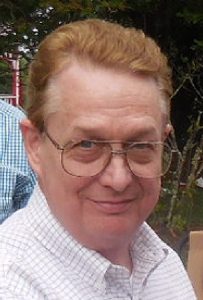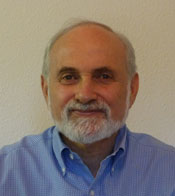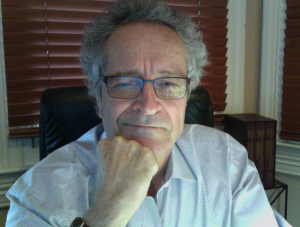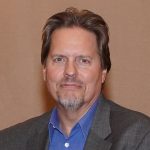The Myth of Biological Depression
The Myth of Biological Depression
 Wayne Ramsay, J.D.
Wayne Ramsay, J.D.
In the Introduction to his book Rethinking Depression (New World Library 2012, p. 3, italics his) California-licensed family therapist Eric Maisel, Ph.D., says this:
One of the goals of this book is to help you remove the word depression from your vocabulary and, as a result, from your life. If depression were an actual disease, illness, or disorder you wouldn't be able to rid yourself of it just by removing it from your vocabulary. But since it isn't a disease, illness, or disorder, you can dispense with it right this second. What I would love for you to say is "I can't be depressed because there is no disease of depression!
Similarly, in her book A Straight Talking Introduction to Psychiatric Drugs (PCCS Books, Ross-on-Wye 2009, p. 65), Joanna Moncrieff, M.B.B.S., M.Sc., MFRCPsych, M.D., Senior Lecturer in Mental Health Sciences at the University College, London, says this:
...it is important to say here that the term "depression" as currently used is misleading. ... there is no scientific evidence to support the idea that there are particular features of the brain that give rise to the particular feeling of depression.
Unhappiness or "depression" alleged to be the result of biological abnormality is called "biological" or "endogenous" or "clinical" depression. In her book The Broken Brain: The Biological Revolution in Psychiatry, University of Iowa psychiatry professor Nancy Andreasen, M.D., Ph.D., says: "The older term endogenous implies that the depression 'grows from within' or is biologically caused, with the implication that unfortunate and painful events such as losing a job or lover cannot be considered contributing causes." (Harper & Row 1984, p. 203).
Similarly, in 1984 in the Chicago Tribune newspaper columnist Joan Beck alleged: "...depressive disorders are basically biochemical and not caused by events or environmental circumstances or personal relationships" (July 30, 1984, Sec. 1, p. 16). A July 2013 Readers Digest article (pp. 132-133) says "For the past 50 years, the conventional wisdom among many psychiatrists was that depression was caused by a brain-chemical imbalance such as low levels of the feel-good hormone serotonin."
The concept of biological or endogenous depression is important to psychiatry for two reasons. First, it is the most common supposed mental illness. As Victor I. Reus, M.D., wrote in 1988: "The history of the diagnosis and treatment of melancholia could serve as a history of psychiatry itself" (appearing in: H. H. Goldman, editor, Review of General Psychiatry, 2nd Edition, Appleton & Lange 1988, p. 332). Second, all of psychiatry's biological "treatments" for depression—whether it is drugs, electroshock, or psychosurgery—are based on the idea that the unhappiness we call depression can be caused by a biological malfunction in the brain rather than life experience. The erroneous belief in biological causation justifies the otherwise unjustifiable use of biological therapies, primarily "antidepressant" drugs and electroconvulsive "therapy" (see Psychiatry's Electroconvulsive Shock Treatment—A Crime Against Humanity). The biological therapies for this nonexistent "disease" of depression and other so-called mental illnesses also in theory justify the existence of psychiatry as a medical specialty distinguishable from psychology, social work, and counseling.
Many professional and lay people today think depression can be caused by a"chemical imbalance" in the brain even though no chemical imbalance theories of depression have been verified. As psychiatry professor Thomas S. Szasz, M.D., said in 2006, "There is no evidence for a chemical imbalance causing mental illness, but that does not impair the doctrine's scientific standing or popularity" ("Mental Illness as a Brain Disease: A Brief History Lesson"). Psychiatry professor Nancy Andreasen discusses some of the chemical imbalance theories of depression in her book The Broken Brain.
One of the theories she describes is the belief that "depression" (what I think should be called simply unhappiness or severe unhappiness) is the result of neuroendocrine abnormalities indicated by excessive cortisol in the blood. The test for this is called the dexamethasone suppression test or DST. The theory behind this test and the claims of its usefulness were found to be mistaken, however, because, in Dr. Andreasen's words, "so many patients with well defined depressive illness have normal DSTs" (pp. 180 182). An article in the July 1984 Harvard Medical School Health Letter reached a similar conclusion. The article, titled "Diagnosing Depression: How Good is the 'DST'?", reported that "For every three office patients with an abnormal DST, only one is likely to have true depression. ... [And] a large fraction of people who are depressed by other criteria will still have normal results on the DST" (p. 5). Similarly, in an article in the November 1983 Archives of Internal Medicine three physicians concluded that "Data from studies currently available do not support the use of the dexamethasone ST [Suppression Test]" (Martin F. Shapiro, M.D., et al., "Biases in the Laboratory Diagnosis of Depression in Medical Practice", Vol. 143, p. 2085). In her 1993 book If It Runs In Your Family: Depression, Connie S. Chan, Ph.D., acknowledges that "There is still no valid biological test for depression" (Bantam Books, p. 106). Despite its having been discredited, some biologically oriented psychiatrists are (apparently) so eager for biological explanations for people's unhappiness or "depression" that they continue to use the DST anyway. For example, in his book The Good News About Depression, published in 1986, psychiatrist Mark S. Gold, M.D., says he continues to use the DST. In that book Dr. Gold claims the DST is "highly touted as the diagnostic test for biologic depression" (Bantam, p. 155, emphasis in original).
In The Broken Brain, Dr. Andreasen also describes what she calls "the most widely accepted theory about the cause of depression...the 'catecholamine hypothesis.'" She emphasizes that "the catecholamine hypothesis is theory rather than fact" (p. 231). She says "This hypothesis suggests that patients suffering from depression have a deficit of norepinephrine in the brain" (p. 183), norepinephrine being one of the "major catecholamine systems" in the brain (pp. 231 232). One way the catecholamine hypothesis is evaluated is by studying one of the breakdown products of norepinephrine, called MHPG, in urine. People with so called depressive illness "tended to have lower MHPG" (p. 234). The problem with this theory, according to Dr. Andreasen, is that "not all patients with depression have low MHPG" (Id). She accordingly concludes that this catecholamine hypothesis "has not yet explained the mechanism causing depression" (p. 184).
Another theory is that severe unhappiness ("depression") is caused by lowered levels or abnormal use of another brain chemical, serotonin. A panel of experts assembled by the U.S. Congress Office of Technology Assessment reported the following in 1992 (The Biology of Mental Disorders, U.S. Gov't Printing Office, pp. 82 & 84):
Prominent hypotheses concerning depression have focused on altered function of the group of neurotransmitters called monoamines (i.e., norepinephrine, epinephrine, serotonin, dopamine), particularly norepinephrine (NE) and serotonin. ... studies of the NE [norepinephrine] autoreceptor in depression have found no specific evidence of an abnormality to date. Currently, no clear evidence links abnormal serotonin receptor activity in the brain to depression. ... the data currently available do not provide consistent evidence either for altered neurotransmitter levels or for disruption of normal receptor activity.
Even if it was shown there is some biological change or abnormality "associated" with depression, the question would remain whether this is a cause or an effect of the "depression". A brain-scan study (using positron emission tomography or PET scans) found that simply asking normal people to imagine or recall a situation that would make them feel very sad resulted in significant changes in blood flow in the brain (José V. Pardo, M.D., Ph.D., et al., "Neural Correlates of Self-Induced Dysphoria", American Journal of Psychiatry, May 1993, p. 713). Other research will probably confirm it is emotions that cause biological changes in the brain rather than biological changes in the brain causing emotions.
IN ALL OF HUMAN HISTORY THERE HAS NEVER BEEN EVEN ONE CASE IN WHICH IT WAS PROVED A PERSON FELT DEPRESSED BECAUSE OF A CHEMICAL IMBALANCE IN HIS OR HER BRAIN
One of the more popular theories of biologically caused depression has been hypoglycemia, which is low blood sugar. In his book Fighting Depression, published in 1976, Harvey M. Ross, M.D., says "In my experience as an orthomolecular psychiatrist, I find that many patients who complain of depression have hypoglycemia (low blood sugar). ...Because depression is so common in those with hypoglycemia, any person who is depressed without a clear cut obvious cause for that depression should be suspected of having low blood sugar" (Larchmont Books, p. 76 & 93). But in their book Do You Have A Depressive Illness?, published in 1988, psychiatrists Donald Klein, M.D., and Paul Wender, M.D., list hypoglycemia in a section titled "Illnesses That Don't Cause Depression" (Plume, p. 61). The idea of hypoglycemia as a cause of depression was also rejected in the front page article of the November 1979 Harvard Medical School Health Letter, titled "Hypoglycemia—Fact or Fiction?"
Another theory of a physical disease causing psychological unhappiness or "depression" is hypothyroidism. In her book Can Psychotherapists Hurt You?, psychologist Judi Striano, Ph.D., includes a chapter titled "Is It Depression—Or An Underactive Thyroid?" (Professional Press 1988). Similarly, three psychiatry professors in 1988 asserted "Frank hypothyroidism has long been known to cause depression" (Alan I. Green, M.D., et al., The New Harvard Guide to Psychiatry, Harvard Univ. Press 1988, p. 135). The theory here is that the thyroid gland, which is located in the neck, normally secretes hormones which reach the brain through the bloodstream necessary for a feeling of psychological well being and that if the thyroid produces too little of these hormones, the affected person can start feeling unhappy even if no problems result from the endocrine (gland) problem other than the unhappiness. The American Medical Association Encyclopedia of Medicine lists many symptoms of hypothyroidism: "muscle weakness, cramps, a slow heart rate, dry and flaky skin, hair loss ... there may be weight gain" (Random House 1989, p. 563). The Encyclopedia does not list unhappiness or "depression" as one of the consequences of hypothyroidism. But suppose you began to experience "muscle weakness, cramps...dry and flaky skin, hair loss ... weight gain"? How would this make you feel emotionally?—depressed, probably. Just as hypothyroidism (hypo = low) is a thyroid gland that produces too little, hyperthyroidism is a thyroid glad that produces too much. Therefore, if hypothyroidism causes depression, then it seems logical to assume hyperthyroidism has the opposite effect, that is, that it makes a person happy. But this is not what happens. As psychiatrist Mark S. Gold, M.D., points out in his book The Good News About Depres-sion: "Depression occurs in hyperthyroidism, too" (p. 150). What are the consequences of hyperthyroidism?: Dr. Gold lists abundant sweating, fatigue, soft moist skin, heart palpitations, frequent bowel movements, muscular weakness, and protruding eyeballs. So both hypo- and hyper- thyroidism cause physical problems in the body. And both cause "depression". This is only logical. It is hard to feel anything but bad emotionally when your body doesn't feel well or work properly. It has never been proved hypothyroidism affects mood other than through its effect on the victim's experience of feeling physically unhealthy.
Some people think chemical imbalance related to hormonal changes must be a possible cause of "depression" because of the supposed biological causes of women's moods at different times of their menstrual cycles. I don't find that argument convincing because I've known so many women whose mood and state of mind was consistently unaffected by her menstrual cycle. Psychology professor David G. Myers, Ph.D., labels premenstrual syndrome (PMS) a myth in his book The Pursuit of Happiness (William Morrow & Co. 1992, pp. 84-85). Of course, some women experience physical discomfort due to menstruation. Feeling lousy physically is enough to put anybody in a bad mood.
Some people believe women experience undesirable mood changes for biological reasons because of menopause. However, a study by psychologists at University of Pittsburgh reported in 1990 that "Menopause usually doesn't trigger stress or depression in healthy women, and it even improves mental health for some". According to Rena Wing, one of the psychologists who did the study, "Everyone expects menopause to be a stressful event, but we didn't find any support for this myth" ("Menopausal stress may be a myth", USA Today, July 16, 1990, p. 1D).
It is also widely believed that women go through a period of depression for biological reasons after giving birth to a child. It's called postpartum depression. In his book The Making of a Psychiatrist, Dr. David Viscott quotes Dr. George Maslow, a physician doing an obstetrical residency, making the following remark: "Come on, Viscott, do you really believe in postpartum depression? I've seen maybe two in the last three years. I think it's a lot of shit you guys [you psychiatrists] imagined to drum up business" (Pocket Books, 1972, p. 88). A woman who had given birth to eight (8) children, which in my opinion qualifies her as an expert on the subject of postpartum depression, told me what she called "postpartum blues" are real, but she attributed postpartum blues to psychological rather than physiological causes. "I don't know about the physiological causes", she said, but "so much of it is psychological." She said "You feel awful about your looks", because in our society a woman is "supposed" to be thin, and for at least a short time after giving birth a woman usually isn't. She also said after childbirth a woman feels considerable "physical exhaustion". Childbirth also is the beginning of new or increased parental obligations, which if we are honest we must admit are quite burdensome. The arrival of new or additional parental obligations and the realization of the negative ways new or additional parenthood obligations will affect a woman's (or man's) life is an obvious non-biological explanation for postpartum depression. It may not be until the actual birth of the child that parents realize how parenthood changes their lives for the worse, but a letter from a female friend of mine who at the time was only three months pregnant with her first child illustrates that depression associated with childbirth may come long before the postpartum period: She said she was frequently breaking down in tears because she thought with a child her life would never the same and that she would be a "prisoner" and wouldn't have time to do what she wanted in life. A reason these psychological causes are often not candidly acknowledged and postpartum (or pre-partum) blues instead attributed to unproven biological causes is our reluctance to admit the downside of parenthood.
Another theory of biologically caused depression is based on stroke damage in the left front region of the brain. What makes it seem possible this might be neurologically caused rather than being a reaction to the situation a person finds himself in because of having had a stroke is stroke damage in the right front of the brain allegedly causing "undue cheerfulness." However, a careful reading of books and articles about neurology for the most part doesn't support the allegation of undue cheerfulness from right front brain damage. Instead, what most neurological literature indicates sometimes results from right front stroke-related brain damage is anosognosia, usually described as lack of concern or inability to know their own problems, not happiness or cheerfulness (e.g., neurology professor Oliver Sacks in The Man Who Mistook His Wife for a Hat and Other Clinical Tales, Harper & Row 1985, p. 5).
Perhaps the most often heard argument is that antidepressant drugs wouldn't work if the cause of depression was not biological. But antidepressant drugs don't work. As psychiatrist Peter Breggin, M.D., says in his book Talking Back to Prozac (St. Martin's Press 1994, p. 200), "there's no evidence that antidepressants are especially effective". Or as British psychiatrist Joanna Moncrieff writes in her book The Myth of the Chemical Cure—A Critique of Psychiatric Drug Treatment (Revised Edition, Palgrave Macmillan 2009, pp. 144 & 152):
...contrary to current opinion, antidepressants are not superior to placebo even in the most severe forms of depression. ... The idea that antidepressants have a specific action on a biological process is still cited as the main justification for the idea that depression is caused by a biochemical abnormality. ... However, the evidence reviewed above suggests that antidepressant drugs do not exert a specific effect in depression.
Psychologist Irving Kirsch, Ph.D., wrote an entire book bebunking the assertion that so-called antidepressants have antidepressant effects: The Emperor's New Drugs—Exploding the Antidepressant Myth (Basic Books 2010). In The Antidepressant Fact Book (Perseus 2001, p. 14) psychiatrist Peter Breggin, M.D., says "The term 'antidepressant' should always be thought of with quotation marks around it because there is little or no reason to believe that these drugs target depression or depressed feelings." There is even evidence that so-called antidepressants make people feel more depressed: According to Dr. Moncrieff, "Evidence suggests that for people without mental health problems, antidepressant drugs are unpleasant to take and make them feel worse. The evidence reviewed in the previous chapter suggests that we have no reason to believe that they elevate mood in patients either" (The Myth of the Chemical Cure, p. 171). Antidepressants are, in other words, a health care scam. Their only possible beneficial effect is placebo effect. This has not prevented drug companies from making billions of dollars selling supposedly antidepressant "medications," however. As California-licensed family therapist Eric Maisel, Ph.D., asks in his book Rethinking Depression (p. 240), "Has the 'mental disorder of depression' been fabricated by the mental health industry to turn human unhappiness and the consequences of human unhappiness into a cash cow? ... You will have to decide if all this mental health labeling is a marvel of medical progress or a variation on the age-old penchant for selling snake oil." Even if so-called antidepressants did help (aside from placebo effect), that wouldn't prove a biological cause of "depression" any more than would feeling better from using marijuana or cocaine or drinking liquor.
"ANTIDEPRESSANTS" ARE A HEALTH CARE SCAM
A careful reading of the books and articles by psychiatrists and psychologists alleging biological causes of the severe unhappiness we call depression usually reveals purely psychological causes that explain it adequately, even when the author believes he has given a good example of biologically caused depression. For example, in Holiday of Darkness: A Psychologist's Personal Journey Out of His Depression (John Wiley & Sons 1982), an autobiographical book by York University psychology professor Norman S. Endler, Ph.D., he alleges his unhappiness or so-called depression "was biochemically induced" (p. xiv). He says "my affective disorder was primarily biochemical and physiological" (p. 162). But from his own words it's obvious his depression was due primarily to unreturned love when a woman he got emotionally involved with, Ann, decided to "wind down" her relationship with him (pp. 2-5) and when he suffered a career setback (loss of a research grant) at about the same time (p. 23). Despite his claims of biochemical causation, nowhere does he cite any medical or biological tests showing he had any kind of biological, bio¬chemical, or neurological abnormalities. He can't, because no valid biological test exists that tests for the presence of any so-called mental illness, including allegedly biologically caused unhappiness (or "depression").
Similarly, in The Broken Brain, psychiatry professor Nancy Andreasen gives the example of Bill, a pediatrician, whose recurrent depression she thinks illustrates that "People who suffer from mental illness suffer from a sick or broken brain [emphasis Andreasen's], not from weak will, laziness, bad character, or bad upbringing" (p. 8). But she seems to overlook the fact that Bill's allegedly biologically caused recurrent depressions occurred when his father died, when he was not permitted to graduate from medical school on schedule, when his first wife was diagnosed with cancer and died, when his second wife was unfaithful to him, when he was arrested for public intoxication during an argument with her and this was reported in the local newspaper, and when his license to practice medicine was suspended because of stigma from psychiatric "treatment" he received (pp. 2-7).
One of the reasons for theorizing about biological causes of severe unhappiness or "depression" is sometimes people are unhappy for reasons that aren't apparent, even to them. The reason this happens is what psychoanalysts call the unconscious:
Freud's investigations shocked the Western world ... Comparing the mind to an iceberg, largely submerged and invisible, he told us that the greater part of the mind is irrational and unconscious, with only the tip of the preconscious and conscious showing above the surface. He main¬tained that the larger, unconscious part—much of it sexual—is more important in guiding our lives than the rational part, even though we deceive ourselves into believing it is the other way around. [Ladas, et al., The G Spot And Other Recent Discoveries About Human Sexuality, Holt, Rinehart & Winston 1982, pp. 6 7]
In An Elementary Textbook of Psychoanalysis, Charles Brenner, M.D., says "the majority of mental functioning goes on without consciousness... We believe today that...mental operations which are decisive in determining the behavior of the individual...even complex and decisive ones—may be quite unconscious" (Int'l Univ. Press 1955, p. 24). A news magazine article in 1990 reported that "Scientists studying normal rather than impaired subjects are also finding evidence that the mind is composed of specialized processors that operate below the conscious level. ...Freud appears to have been correct about the existence of a vast unconscious realm" (U.S. News & World Report, Octo¬ber 22, 1990, pp. 60-63). An article in the June 2011 Psychology Today magazine tells us "Neuroscience has also confirmed another fundamental tenet of psychoanalytic theory—the idea that our motivations are largely unconscious ... 'Neuroscience tells us unambiguously that consciousness really is just the tip of the iceberg'" (Molly Knight Raskin, "The Idea That Wouldn't Die", p. 75 at 83). People's unhappiness or so-called depression being caused by life experience is not always obvious, because the relevant mental processes and memories are often hidden in the unconscious parts of their minds.
DEPRESSED? IT'S NOT YOUR BRAIN. IT'S YOUR LIFE
This critical aspect of human psychology was missed or overlooked in an otherwise excellent book, The Loss of Sadness—How Psychiatry Transformed Normal Sorrow Into Depressive Disorder (Oxford University Press 2007) by Allan V. Horwitz, Ph.D., Professor of Sociology and Dean of Social and Behavioral Sciences at Rutgers University, and Jerome C. Wakefield, Ph.D., D.S.W., Professor of Social Work at New York University. Drs. Horwitz and Wakefield effectively debunk the American Psychiatric Association's concept of depression as a disorder except when there is no obvious cause in terms of life experience. They erroneously assume experiences in life and the thinking that cause sadness will always be obvious and easy to identify and that when no such cause can be readily identified, deeply felt or prolonged sorrow may indeed be a true biological or psychological "disorder" even though they, like all who support the idea of endogenous or biological depression, are unable to identify the supposed non-experiential, biological causes and simply assume such causes must exist.
I believe unhappiness or so-called depression is always the result of life experience. There is no convincing evidence unhappiness or "depression" is ever biologically caused. The brain is part of our biology, but there is no evidence severe unhappiness or "depression" is sometimes biologically caused any more than bad TV programs are sometimes electronically caused. "[T]he question is not how to get cured, but how to live" (Joseph Conrad, quoted by Thomas Szasz, The Myth of Psychotherapy, Syracuse Univ. Press 1988, title page). "When mental health professionals point to spurious genetic and biochemical causes," of depression and recommend drugs rather than learning better ways of living, "they encourage psychological helplessness and discourage personal and social growth" of the sort needed to really avoid unhappiness or "depression" and live a meaningful and happy life (Peter Breggin, M.D., "Talking Back to Prozac" Psychology Today magazine, July/Aug 1994, p. 72).


 Phillip M. Sinaikin, M.D., M.A. (retired), Board Certified in Psychiatry
Phillip M. Sinaikin, M.D., M.A. (retired), Board Certified in Psychiatry

 Al Galves, Ph.D.
Al Galves, Ph.D. “The reproducibility of published experiments is the foundation of science. No reproducibility – no science." - Moshe Pritsker, Ph.D., CEO of JoVE1
“The reproducibility of published experiments is the foundation of science. No reproducibility – no science." - Moshe Pritsker, Ph.D., CEO of JoVE1 Wayne Ramsay, J.D.
Wayne Ramsay, J.D.